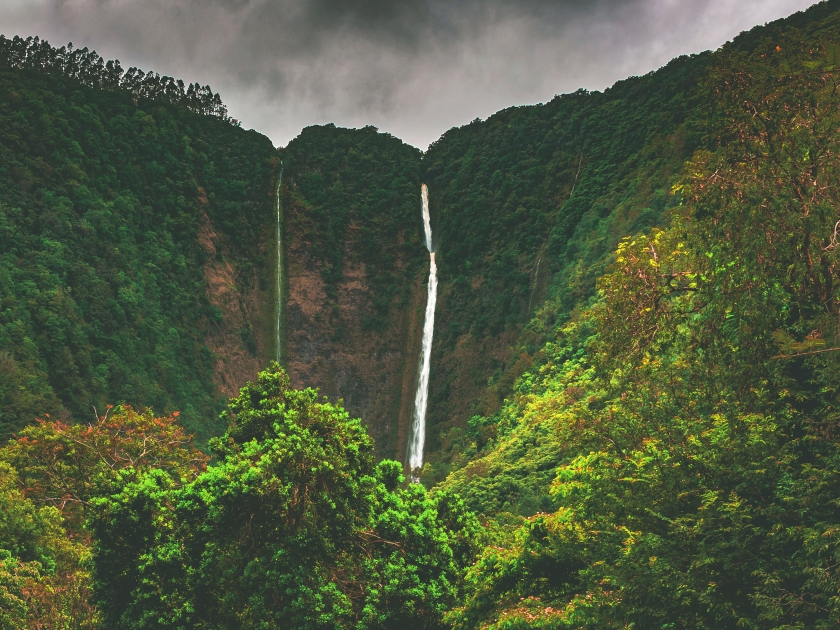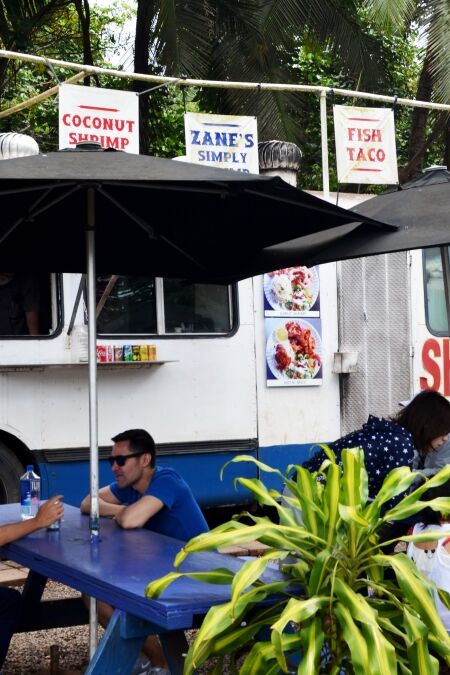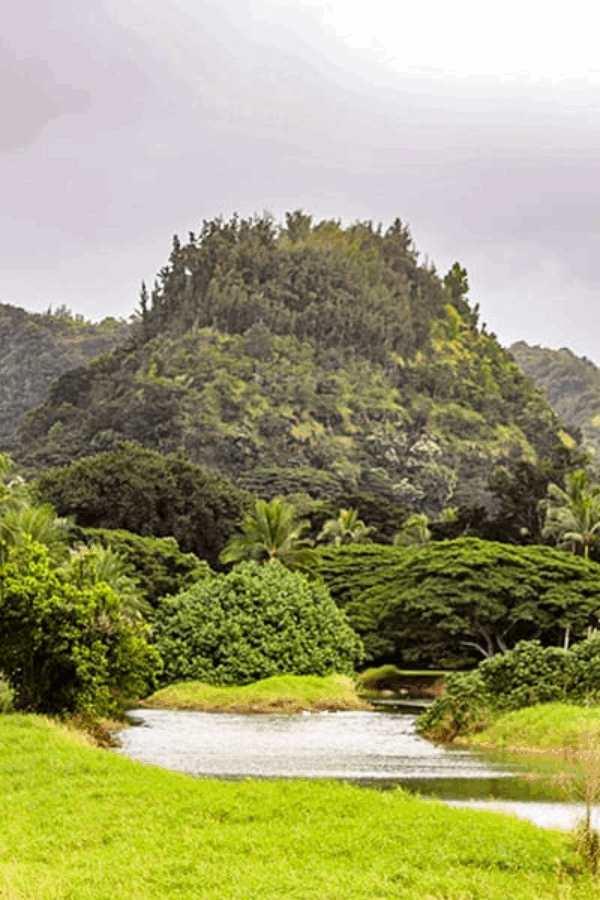Waipio Valley, often referred to as the “Valley of the Kings,” is a revered and picturesque destination on the Big Island of Hawaii. This lush valley holds great historical significance as a sacred residence for Hawaiian royalty and is characterized by its dramatic cliffs and fertile landscapes. This guide will delve into everything the valley has to offer, including practical travel tips and the best local spots to enhance your visit to this stunning Hawaiian gem.
Highlights
- Take in panoramic views of verdant cliffs, vibrant jungle foliage, and the expansive Pacific Ocean from the valley overlook—a must-see for photographers and nature lovers alike.
- The valley features rigorous hiking trails that lead down to the valley floor, where the real exploration begins.
- At the base of the valley, find a beautiful black sand beach that’s perfect for picnics, swimming, and surfing.
- The valley boasts several waterfalls, including Hi’ilawe Falls, one of the tallest and most spectacular waterfalls in Hawaii.
- Learn about the traditional farming techniques and the importance of taro in Hawaiian history from the local farmers.
- Horseback tours provide a less strenuous alternative to hiking and allow visitors to cover more ground across the valley floor, including hidden waterfalls and private streams.
History

Thriving Hawaiian Community
Long before the arrival of Europeans, Waipio Valley was a bustling hub of activity. With its fertile lands, the valley supported a dense population of 4,000 to 10,000 people. It served not only as a vital agricultural center but also as a political stronghold for Hawaiian royalty, reflecting its nickname, the “Valley of the Kings.”
Kamehameha's Rise to Power
A significant historical event took place in Waipio Valley in 1780 when Kamehameha the Great, destined to unify the Hawaiian Islands, was presented with his war god Kukailimoku. This marked a pivotal moment in his journey to kingship, underlining the valley’s importance in Hawaiian history.
Sacred Sites
Waipio Valley was also a spiritual center, featuring several heiaus (temples), including the notable Pakaalana, which served as a pu’uhonua (place of refuge). These sites underline the valley’s deep cultural and religious significance to the Hawaiian people.
Foreign Influence and Devastation
The 19th century introduced new dynamics with the arrival of Chinese immigrants, who established their community within the valley. However, this growing settlement faced a tragic setback when a devastating tsunami in 1946 destroyed much of the valley’s infrastructure, leading to a significant decline in the population.
Enduring Legacy
Today, Waipio Valley is home to roughly 50 residents, including taro farmers and those embracing a more traditional lifestyle. Despite the dramatic shifts in its population over the centuries, the valley continues to be a place of breathtaking beauty and profound cultural importance to Hawaiians, preserving its legacy as the “Valley of the Kings.”
Things to Do and See
Hiking Trails

Waipio Valley is a hiker’s paradise with trails that offer both stunning vistas and challenging terrain. The Waipio Valley Lookout provides an easily accessible view of the valley, perfect for those looking for a light adventure, while the Muliwai Trail offers a more rigorous hike, leading adventurers across ancient paths and lush landscapes. First-time hikers should pack water, wear sturdy shoes, and adhere to trail etiquette to ensure a safe and enjoyable experience.
Waterfalls and Rivers

The majestic Hi’ilawe Falls, falling over 1,300 feet, is one of the tallest and most awe-inspiring waterfalls in Hawaii. Adventurers can explore several lesser-known waterfalls throughout the valley, each offering unique views and tranquil swimming spots. Visitors should always check current conditions for safety and enjoy the natural beauty of these aquatic treasures from designated areas.
Cultural Sites
Waipio Valley is steeped in Hawaiian history, home to ancient taro fields and sacred temples that reflect its past as a political and spiritual hub. These cultural sites offer a glimpse into the traditional life and rituals of the Hawaiian people, making them essential stops for anyone interested in the rich heritage of the islands.
Adventure Activities
Horseback Riding Tours

Explore the rugged terrain of Waipio Valley on horseback with guided tours that take you through some of the valley’s most beautiful landscapes. Suitable for riders of all levels, these tours provide a unique way to experience the valley’s natural beauty.
ATV Tours
For a thrilling adventure, ATV tours offer an exhilarating ride through the valley. Operators provide various routes that cater to different experience levels, and booking in advance is recommended to secure your spot.
Kayaking and Paddleboarding
The calm waters of Waipio Valley’s rivers are perfect for kayaking and paddleboarding. Rental shops are available at key locations, offering all the gear you need for a day on the water.
Helicopter Tours

For a bird’s-eye view of Waipio Valley, helicopter tours are available. These tours provide unparalleled views of the valley’s landscapes, waterfalls, and coastline, offering a unique perspective on this stunning region.
Photography Tips in Waipio Valley
Waipio Valley is a photographer’s dream, with its awe-inspiring landscapes offering numerous opportunities for capturing stunning imagery. For sunrise photography, the east-facing cliffs near the Waipio Valley Lookout provide a perfect vantage point as the morning light illuminates the valley. Sunset photographers will find the westward views from Hi’ilawe Falls ideal for catching the golden hues reflecting off the water and cliffs. Throughout the valley, photographers are encouraged to stay on marked trails and adhere to local guidelines to preserve the pristine condition of the natural environment.
Safety and Travel Tips
- Wear appropriate footwear such as hiking boots for grip and support.
- Always stick to marked trails to avoid getting lost and to minimize the risk of accidents.
- Consider hiring a local guide who can provide expert navigation through potentially hazardous areas.
- Carry out all trash and leave no trace to preserve the natural beauty of the valley.
- Avoid disturbing wildlife and adhere to guidelines regarding interaction with local fauna.
- Respect any sacred sites you encounter; many areas in Waipio Valley hold cultural significance to the Hawaiian people.
- Educate yourself about the local customs and history to appreciate and honor the valley’s heritage.
- Engage with local communities respectfully and support local businesses whenever possible.
Frequently Asked Questions (FAQs)
Waipio Valley is renowned for its breathtaking landscapes, lush greenery, and deep historical significance as a cultural and spiritual site in Hawaiian heritage.
Popular activities in Waipio Valley include hiking, horseback riding, and guided tours that explore the valley’s scenic vistas and waterfalls.
Yes, Waipio Valley is open to the public. However, access to the valley floor is restricted to those with four-wheel drive vehicles or participants in guided tours due to the steep access road.
Waipio Valley holds historical importance as the boyhood home of King Kamehameha I and has been a significant agricultural and spiritual center for the Hawaiian people.
Yes, swimming is possible in Waipio Valley at several river spots and waterfalls, but swimmers should be cautious of the current and water levels, which can vary.
The best time to visit Waipio Valley is during the spring and early summer months when the weather is most favorable for hiking and other outdoor activities.
How to Get There
By Car
To explore the stunning landscapes of Waipio Valley by car, start your adventure from Honokaa on the Big Island of Hawaii. Take Highway 240, which will lead you directly to the Waipio Valley Lookout. The road ends here, and due to the valley’s steep and challenging terrain, only 4WD vehicles are allowed further down into the valley itself. It’s important to note that the descent is not recommended for inexperienced drivers due to its steep and narrow conditions.
By Bus
For those opting for public transportation, getting to Waipio Valley by bus involves a bit more planning. The Hele-On Bus, servicing the Island of Hawaii, offers routes from Hilo to Waipio Valley with a transfer to Honokaa. From Honokaa, you could arrange for a guided tour or a shuttle service to take you into the valley, as these services are equipped to handle the unique road conditions. Keep in mind that public transportation schedules may change, so it’s always a good idea to check the latest Hele-On Bus timetables and tour availability before planning your trip.
Start Planning Your Waipio Valley Adventure Today!
Don’t miss the opportunity to explore the majestic Waipio Valley and experience its breathtaking landscapes and rich history firsthand. Begin organizing your trip by checking out HawaiiActivities.com for detailed travel guides and tips. Reserve your spot today and prepare for an unforgettable journey into the heart of Hawaii’s natural beauty.




